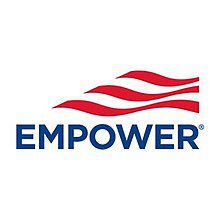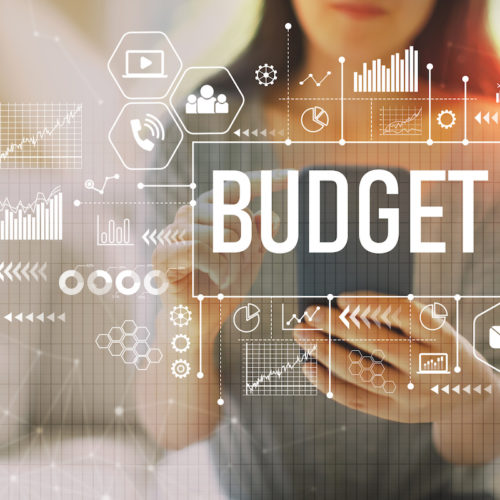Effective January 1st, 2024, Mint was shut down and integrated into Credit Karma. Mint users can still access several of the platform’s financial tools with a free Credit Karma account, but Mint is no longer be available.
Mint helps you monitor your spending habits and keep track of your account balances. You can also use Mint to stay on top of your bills and track your credit score.
Simply put, this budgeting tool can show all your financial information in one central location.
When I started my journey to financial independence, Mint was one of the first money management tools that I used.
I have also recommended Mint to many of my family members and friends.
Keep reading to learn what Mint has to offer, so you can decide whether this budgeting app is right for you.
What is Mint?
In a relatively short time, Mint has become one of the world’s most popular financial planning and budgeting apps. Let’s take a look at how that happened.
The Backstory
Mint initially launched in 2007 and has grown rapidly since then. Two years after Mint opened shop, the company had built an impressive customer base of over a million users.
In fact, Mint’s advancement was so impressive that Intuit, owner of Turbo Tax, decided to acquire the company for a cool $170 million. Not too shabby — especially when you consider Intuit already owned Quicken, the grandfather of budgeting software.
Today, Intuit has sold Quicken but it still operates and backs Mint and its 20 million users. In the App Store, Mint has over 500,000 reviews and an average rating of 4.7 stars (out of 5), making it one of the highest-rated apps I’ve seen.
Android users can download Mint on the Google Play store where the app has a 4.6-star rating (out of 5) and over 150,000 reviews.
How Intuit Mint Works
Intuit Mint syncs with most financial institutions. Once you start a Mint account, you’ll connect the app to your bank, credit union, mortgage lender, and other financial accounts by entering the login information for each of them.
After that, Mint will automatically pull relevant information from your financial institutions so it can display details from all your accounts on your dashboard.
For example, let’s say you have a Chase checking account, a high-yield savings account with Ally, an employer-sponsored 401k, and an American Express credit card account.
Mint would prompt you to log in to each of these accounts. Then it would pull that data right into the smartphone app to give you a big picture glance at your finances any time you need it.
You can check your real-time account balances simply by pulling up the app. Suffice it to say it’s a lot more convenient to log in to one account versus logging in to four different ones to get a glance at your cash flow.
And that’s just the first step — getting all your account information in one place. Mint has a lot more to offer.
Mint Features
Let’s take a look at the various tools and features Mint offers.
Bill Tracker
Mint’s Bill Tracker ensures you’ll (hopefully) never make a late bill payment again.
To use this feature, simply open the bill tracker in the app and enter which bills are due and when.
For example, you can set the bill tracker to remind you the gas bill is due on the first of the month, your water bill is due on the 10th, and your credit cards are due on the 25th.
Once these rules are set, Mint automatically alerts you when the due date is approaching. And once you’ve paid your bills, you can mark them as paid within the app.
Daily Budget Planner
Mint’s Daily Budget Planner automatically analyzes your daily spending habits and suggests a customized budget plan based. You can then modify these recommendations to reflect your personal goals.
This budgeting feature also helps you understand how you’re spending your hard-earned cash by breaking your spending down into categories.
For example, the app will show you how much you’re spending on restaurants, utilities, and transportation each month. Then, if you have a particular financial goal you’re trying to reach — for example, saving $3,000 for a vacation — the budget planner can help you make category-specific adjustments to your spending in order to save for your goal.
Practically speaking, the budget planner would help you realize that if you spent $150 less on restaurants and $100 less on groceries each month, you’d be able to achieve your $3,000 vacation goal in 12 months.
Credit Score Monitoring
The Intuit Mint app also helps you keep track of your credit score with its Credit Score Monitoring service. There’s no cost to see your credit score.
You’ll need to confirm your identity, and you’ll always have access to your score right within the app. You can also sign up to receive automated credit alerts.
Alerts
If you really want to stay on top of your spending, account balances, and credit score, you’ll appreciate Mint’s Alerts feature.
You could set the mobile app to alert you when you’ve been hit by an ATM fee or a late payment fee. You can also set alerts to warn you if your account balances are low or if one of your accounts shows unusual spending.
What’s more, you can set alerts to notify you if you’ve spent too much on a particular monthly spending category.
Portfolio and Investment Tracking
Mint’s Portfolio and Investment Tracking tool helps you keep track of your 401(k) and other investment accounts. You could also sync an IRA.
It also keeps you informed of any fees you’re being charged and helps you see how your investments are being allocated.
This tool helps you track your investments but it isn’t a brokerage account. If you want this kind of service built into your budgeting app, consider Personal Capital instead.
Mint Credit Monitoring
As I mentioned earlier, Mint users have access to free credit score monitoring within the Mint smartphone app. However, the free version only gives you access to your score from one credit bureau (TransUnion).
If you prefer a more detailed level of credit monitoring, including access to your credit scores across all three bureaus:
- TransUnion
- Experian
- Equifax
…you might consider upgrading to Mint’s Credit Monitoring service.
This is a separate service from the free Mint app that’s offered by Intuit for a monthly fee of $16.99. Truth be told, you can probably find comparable credit monitoring services that don’t cost this much money—or are even free.
Fees
The Mint app is 100% free to sign up for, download, and use. The company generally earns revenue by matching you with related services from third-party advertisers.
For example, if Mint detects you have an outstanding credit score, you might receive an email advertisement that encourages you to sign up for a top-tier credit card, mortgage loan, or brokerage firm.
Or if Mint sees you have a lot of credit card debt, it may suggest a consolidation loan or balance transfer card. Mint does a good job matching you with services you could use. For example, if you spend a lot on groceries, Mint may suggest a credit card with a high cash back percentage on groceries.
If you sign up for one of those services, Mint earns a commission. As the saying goes, nothing is free, right? Mint also offers some premium services that cost money, too.
For example, Mint’s credit monitoring service will set you back $16.99 each month.
Getting Started
To sign up for a Mint account, click the orange Sign Up button in the top-right corner of your web browser.
Next, you’ll have to create an Intuit account by entering your basic personal information. You’ll then be asked to link your external financial accounts by logging into them from the Mint portal.
If you download the app, you’ll go through a similar registration process on your iOS or Android mobile device.
Security
Mint and its parent company Intuit take security seriously. Mint uses the security scanning tool Verisign and often requires multi-factor authentication for account access.
You can also set a pin code or activate TouchID to prevent unauthorized people from accessing your data in the event that you lose your phone. Expect to answer security questions when you log in on a new device.
With all your sensitive financial data in one place, you’ll appreciate this extra protection for your financial life.
Customer Support
Mint offers self-service customer support and live chat. According to their customer care contact page, chat support is available seven days a week from 8 am until 6 pm Eastern Time.
Unfortunately, there is no number for phone support. If you have questions about Mint Credit Monitoring, however, you can give them a call at 1-800-499-4466.
Live chat and email support are both also available.
Pros and Cons
Pros
- It’s free! Enough said.
- Super easy to use for tracking spending and setting savings goals.
- Robust security features give you peace of mind when disclosing financial data.
- Highly rated iPhone and Android apps; also works on Microsoft Windows and Amazon mobile devices.
- Free credit score monitoring (even if it’s just one bureau).
Cons
- Getting marketed to with external products can become annoying.
- Limited customer support options (not 24/7).
- No real investment or savings functionality. You cannot move your money; only track it.
- No direct bill pay service; you’d still have to pay bills outside app.
FAQs
Is Quicken Better Than Mint?
Quicken and Mint are two different services. Mint offers a free-spending tracking and budget planning app. Quicken is a more complex personal finance software that enables you to pay bills and manage business taxes and expenses.
Quickbooks is an even more complex program for small business accounting.
If you’re looking for a simple and easy-to-use personal budgeting app, Mint is probably what you want.
If you’re looking for more complex financial planning software, you might consider paying for Quicken.
Continue Reading:
Is Mint Any Good?
Yes. Mint is one of the best and most popular personal finance apps on the market. As mentioned earlier, it has a 4.7-star rating (out of 5) in the App Store.
Is the Mint App Safe?
Yes. Mint is safe to use. The app uses several advanced security features, including multi-factor authentication and TouchID for account access.
What’s more, Mint is backed by the financial services firm Intuit, which has thousands of employees and many dedicated security personnel.
How Does Mint Make Money?
Mint earns money by marketing external products and services to its subscribers. As I briefly mentioned earlier, you might, for example, get an email from Mint with information about signing up for a credit card, car loan, or life insurance.
If you sign up through their affiliate links, Mint gets paid a commission.
Mint also monetizes its customers’ aggregate financial data, meaning that they sell your anonymized data to third-party companies who then use that data to better target their products and services to you. (Like it or not, tons of online companies do this nowadays.)
Alternatives to Mint
We’ve written a lengthy post on the best personal finance software available (both paid and free). Here are some of the more popular alternatives to Mint:
- Personal Capital: Great for growing money through investments.
- Tiller: An add-on to enhance your budget in Microsoft Excel or Google Sheets
- PocketSmith: An ad-free alternative with a monthly fee.
- YNAB (You Need a Budget): Nice Mint alternative for basic budgeters.
- Wally: High-performance budgeting app for iOS only.
- Quicken: Better for more advanced accounting.
- EveryDollar: Good personal finance tool for beginning budgeters; charges a fee for more advanced services.
- MoneyDance: Nice option for people who don’t want to sync accounts; can enter transactions manually.
Keep in mind that Mint was the original player in the spend tracking game.
Learn More:
Is Mint Right for You?
It’s tough to keep up with all your different financial accounts and logins. It’s even tougher to get a handle on your financial situation without considering all your different accounts.
For example, it’s not uncommon to have two different bank accounts, several credit cards, a car loan, a student loan, a retirement savings account (IRA or 401k), and a mortgage. Off the top of my head, that’s about 10 different logins that you’ll have to remember and keep track of.
Mint excels at making this process effortless. With Mint, you can access all your financial data in one place while tracking your spending habits at the same time.
On the other hand, if you don’t like syncing your financial accounts online — and if you don’t like being marketed to any more than you usually are — don’t sign up for Mint because that’s how this app makes its money.
Ultimately, it’s up to you to decide which tools make the most sense for your financial situation.
If you would like to read my tips about how to make a budget, or learn about some of the best money tools aside from Mint, click either link.
Thanks for reading, and good luck on your journey toward financial independence.






Read 2 comments or add your own
Read Comments